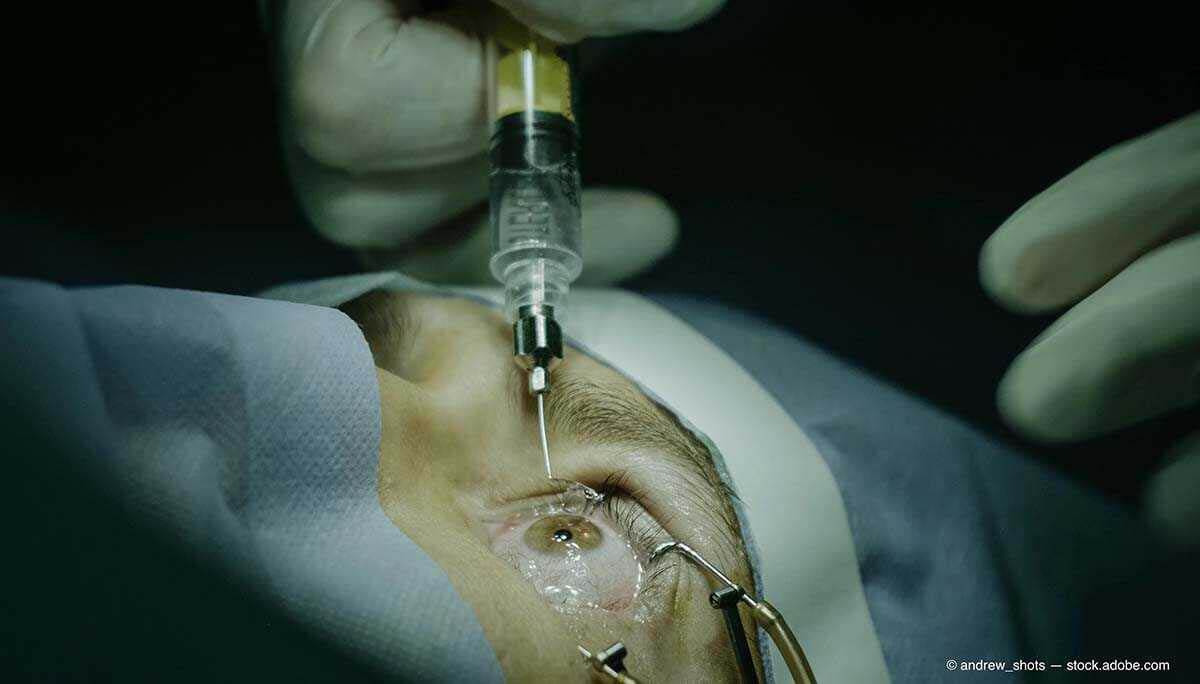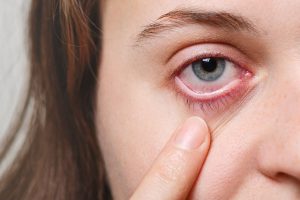In the past decade, there has been a growing trend in utilizing intraocular needle treatments for various eye diseases. Despite the initial anxiety associated with the term “needle,” this procedure offers a more comfortable experience for patients when compared to surgical interventions commonly used in treating eye conditions. This article aims to provide insights into the concept of intraocular needle treatment, detailing its purpose, the eye conditions it addresses, potential side effects, and a step-by-step explanation of how the procedure is administered.
What is Intraocular Needle Treatment (Intraocular Injection, Intravitreal Injection)?
Intraocular needle therapy, also known as intraocular injection or intravitreal injection, is an advanced treatment method that enables the direct application of medication to the eye through specialized and delicate procedures. This modern approach has evolved over the last quarter-century, offering a precise and targeted means of delivering therapeutic agents to address various eye conditions.

The Necessity of Intraocular Needle Treatment?
In treating retinal diseases, the retina acts as a protective barrier, preventing oral pills and eye drops from penetrating its layers effectively. To overcome this challenge and ensure the efficacy of treatment, intraocular needle injections become crucial. By directly delivering therapeutic agents to the vitreous gel in front of the retina, this method allows rapid and effective passage of drugs to the retina, bypassing the limitations posed by the retinal layers.
Treating Vision Challenges: Intraocular Needle Solutions
In the realm of eye care, intraocular needle treatments stand as a beacon of hope for various eye diseases, offering a means to halt progression and enhance treatment efficacy. Delving into the specifics, let’s explore the diverse eye conditions addressed by intraocular needle treatments:
Yellow Spot Disease (Macular Degeneration)
Age-related macular degeneration unfolds with the emergence of fragile vessels (choroidal neovascularization) beneath the retina, leading to fluid and blood leakage. Intravitreal application of Anti-VEGF agents proves instrumental in preventing such leakage and preserving vision.
Other Causes of Choroidal Neovascularization (CNV)
Beyond age-related macular degeneration, CNV can be triggered by factors such as high myopia, angioid streaks, chorioretinitis, and genetic retina diseases. In all these cases, the administration of intravitreal Anti-VEGF agents emerges as an effective treatment strategy.
Diabetic Macular Edema (Sugar-Induced Visual Spot Edema)
In diabetes, damage to the retina’s vessels leads to macular edema due to fluid leakage. Intravitreal injections containing Anti-VEGF and steroids prove efficacious in regressing this edema.
Macular Edema Due to Vascular Occlusions
Blocked retinal veins can result in macular edema, akin to diabetic macular edema. Intravitreal injections containing Anti-VEGF and steroids offer a regressive treatment approach for this condition.
Uveitis
Inflammation in uveitis can lead to macular edema. Intravitreal injections containing steroids prove effective in treating macular edema associated with non-infectious uveitis.
Retinopathy of Prematurity
Babies born prematurely, with underdeveloped retinal vessels, face the risk of incorrect vessel development post-birth. Intravitreal Anti-VEGF agents play a crucial role in causing regression in these faulty vessels.
Needle Treatment for Bleeding Behind the Eyes
In cases of bleeding behind the eyes, needle treatment alone may not suffice. However, for patients with bleeding from retinal vessels in conditions like diabetes or retinal vein occlusion, intraocular Anti-VEGF injections, administered before vitrectomy surgery, can help reduce bleeding during the procedure. It’s crucial to note that these injections should be avoided in cases of non-diabetic or non-retinal vein occlusion-related bleeding, as they may exacerbate situations involving retinal tears or ruptures.
Navigating the Comfort of Intraocular Injection Treatment
Embarking on the meticulous process of intraocular injection treatment ensures a journey through eye care designed for both efficacy and patient comfort. The initial step involves the application of a specialized anesthetic agent to guarantee a pain-free experience. Following this, the eye undergoes a thorough cleansing with 5% povidone-iodine, creating a pristine and sterile environment for the upcoming procedure.
The use of an exceptionally thin needle adds a touch of precision, strategically administering the injection from the sclera’s white part. This swift process, lasting mere seconds, may elicit a fleeting sensation akin to a slight sting. Post-treatment care includes the regular application of antibiotic eye drops for five days and a day of gentle eye closure to minimize infection risks. The entire procedure, lasting approximately five minutes, allows for a well-deserved 1-2 day rest period before resuming daily activities. This comprehensive approach not only prioritizes therapeutic outcomes but also ensures a harmonious and patient-centric journey through intraocular injection treatment.
Unraveling the Nuances of Individualized Intraocular Needle Treatment
Individualized intraocular needle treatment underscores the unique dynamics of each patient and disease, tailoring the treatment protocol for enhanced patient compliance and optimal visual outcomes with minimized injections. At our clinic, a comprehensive eye examination and tomography scans precede every intraocular injection. In wet-type age-related macular degeneration, the patient’s response to the first three monthly anti-VEGF injections dictates subsequent intervals, aiming for an extension of up to 16 weeks. Despite variations—some patients maintaining 4-6 week intervals while others reaching 16 weeks after the first year—those without attacks after 3 or 4 injections at 16-week intervals can transition to needle-free follow-ups. For diabetic macular edema and retinal vein occlusion, insufficient recovery in the initial 3 monthly anti-VEGF injections may lead to the introduction of steroid-containing injections, with treatment intervals set at 3-6 months. Following the first year, select patients may continue without treatment, while others persist with ongoing injections based on their individual response. This personalized approach optimizes treatment efficacy while minimizing the burden of injections for each patient.
Understanding Potential Complications of Intraocular Needle Treatment
The primary concern following intraocular injection (intravitreal injection) is the potential for eye infection, although this risk is minimal when patients adhere to doctors’ instructions. Additionally, there is a slight chance of a sudden increase in eye pressure and intraocular bleeding post-injection. These occurrences, albeit uncommon, can be effectively managed by experienced medical professionals.
Drugs in Intraocular Injections: Anti-VEGF and Cortisone Therapies
In intraocular injection treatments, two primary types of drugs are employed:
Anti-VEGF Therapy: These agents, first introduced intraocularly in 2004, encompass three distinct molecules currently utilized in our country:
- Altuzan or Avastin (Bevacizumab) 25 mg/0.05 mL
- Lucentis (Ranibimuzab) 5 mg/0.05 mL or 0.2 mg/0.05 mL
- Eylea (Aflibercept) 2 mg/0.05 mL
Cortisone Treatment: Primarily employed in the treatment of diabetic macular edema and edema resulting from retinal vein occlusion, these drugs are not commonly used for age-related macular degeneration or CNV.
- Ozurdex (dexamethasone) Implant
- Triamcinolone Acetonoid: With the advent of Ozurdex in the market, the use of triamcinolone has markedly declined.
Clarity on Intraocular Needle Treatment: FAQs
Is Intraocular Needle Treatment Safe?
While every medical procedure carries inherent risks, intraocular injections, when administered by experienced professionals under optimal conditions, exhibit minimal risks. The expertise of the administering hands significantly contributes to maintaining safety levels at a minimum.
How Long Does the Effect of Intraocular Needle Treatment Last?
The effectiveness of anti-VEGF injections spans 1-2 months, but with prolonged treatment, intervals can be extended to 4 months, and certain patients may even transition to follow-ups without active treatment. Ozurdex, featuring steroids and employed in treating diabetic macular edema and retinal vein occlusion-induced edema, showcases a lasting effect of 3-6 months. Similarly, extended treatment plans may lead to prolonged intervals and the possibility of some patients transitioning to treatment-free follow-ups.
Side Effects of Intraocular Needle Treatment
The primary side effect observed post-intraocular injection treatment is periorbital bleeding. While this may instill initial apprehension, it typically resolves within 10 days without necessitating specific interventions. Anti-VEGF injections generally exhibit a favorable safety profile, yet patients with a history of heart attack or stroke may require clearance from their cardiologist or neurologist for the initial three administrations. In contrast, steroid-containing injections bear the potential for complications such as glaucoma and cataracts. Vigilant monitoring and appropriate medical consultations contribute to managing and mitigating these potential side effects.
Post-Intraocular Needle Treatment Guidelines
Following intraocular injection treatment, it is crucial to keep the eye closed for approximately one day, only opening it for the application of prescribed drops. Mild stinging and burning sensations in the eyes on the day of the injection are common. However, any severe eye pain or sudden loss of vision occurring on the day of the injection or the subsequent day should prompt immediate contact with the administering physician for prompt evaluation and intervention.
My Scientific Studies on Intraocular Injections
Risk-based Algorithm-guided Treatment Protocol for the Management of Neovascular Age-related Macular Degeneration. doi: 10.4274/tjo.galenos.2019.26235
Our research, focusing on patients with wet-type age-related macular degeneration, has been successfully published in the Turkish Journal of Ophthalmology. The study comprehensively assessed 210 eyes from 184 patients who underwent personalized anti-VEGF treatment protocols based on individual risk factors. Remarkably, treatment discontinuation was achieved in 63% of cases, with subsequent observations revealing recurrences in 58% approximately one year later. The study demonstrated a significant improvement in visual acuity, showcasing an increase of +9.0 letters after one year and +8.0 letters after two years. On average, patients received 3.5 intraocular anti-VEGF injections per year. This research contributes valuable insights into the efficacy and outcomes of personalized treatment approaches in managing wet age-related macular degeneration









